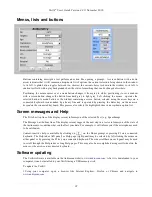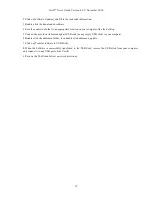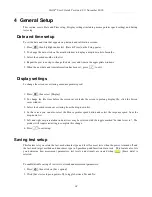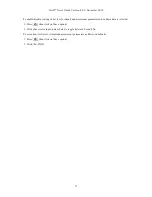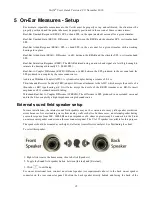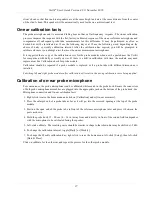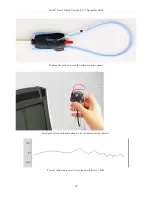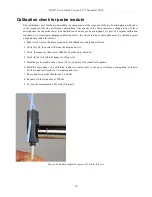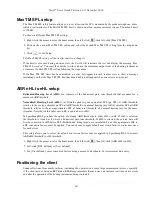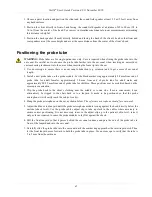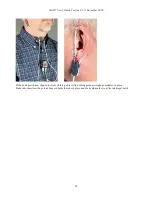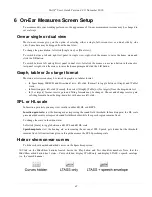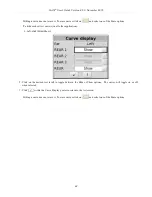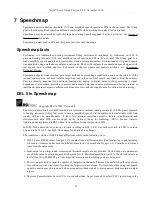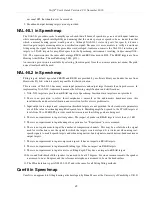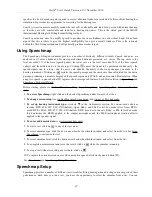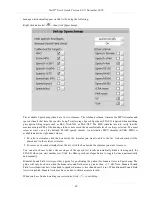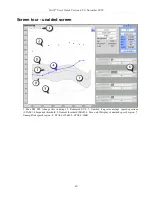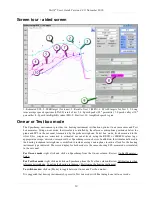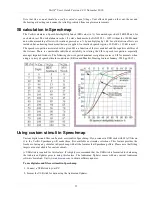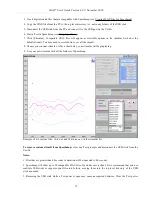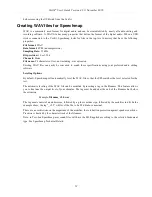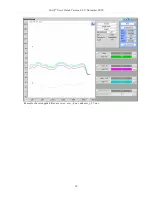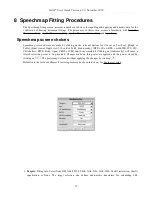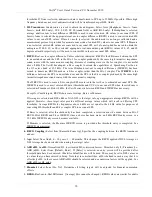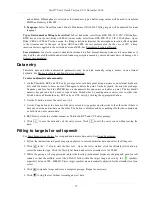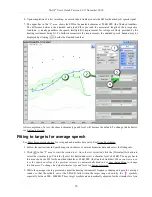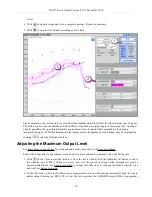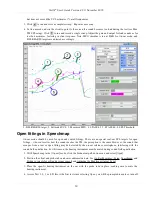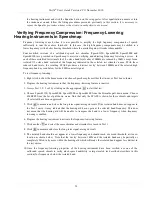
Verifit
®
User's Guide Version 4.8
©
November 2016
ear canal SPL that should never be exceeded.
5. Broadband output limiting targets are not provided.
NAL-NL1 in Speechmap
The
NAL-NL1
procedure seeks to amplify speech such that all bands of speech are perceived with equal loudness
while maximizing speech intelligibility and ensuring that the wearer perceives speech to be no louder than that
which a normal hearing person would perceive. Although NAL-NL1 states its goals for speech, it derives
insertion gain targets assuming noise as a verification signal. Because it is more accurate to verify a non-linear
fitting using the signal for which the procedure was developed, Audioscan converts the NAL-NL1 insertion gain
targets to LTASS targets for amplified speech in the Speechmap environment, resulting in
Speechmap/NAL-
NL1
. The conversions use the same adult average RECD and REUG as used in DSL. The RESR targets are from
Hearing Aids (Dillon, Thieme Publishing, 2001, p274).
An insertion gain version is available by selecting [Insertion gain] from the on-ear measures test menu. The pink
noise stimulus should be used.
NAL-NL2 in Speechmap
Fitting targets, default age-related RECD and REUG are provided by a software library used under license from
Hearworks Pty Ltd. which is solely responsible for their derivation.
This revision of NAL-NL1 has many more input parameters and output target formats than its predecessor. In
implementing NAL-NL2, Audioscan has made the following simplifications and clarifications:
1. NAL-NL2 targets are provided as REAR targets in Speechmap. Insertion Gain targets are not provided.
2. There is no provision to select Insert earphones + earmold as the audiometric transducer since this
invalidates the audiometer calibration and correction for this error is problematic.
3. Input-output curve targets and compression threshold targets are not provided. Such steady-state parameters
are of little value in estimating amplified speech levels. Matching amplified speech to the LTASS targets at
levels from 50 to 80 dB SPL provides much better assurance that fitting goals are being met.
4. There is no requirement to input client gender. The impact of gender on REAR targets is less than +/- 1dB.
5. There is no requirement to input hearing aid experience. An "Experienced" user is assumed.
6. There is no requirement to input the number of compression channels. This may be useful when the signal
used for verification is not the signal for which the targets were developed. It is irrelevant when using real-
speech signals to match speech targets and when using narrow-band signals to match narrow-band maximum
output targets.
7. There is no requirement to input compression speed. It has no impact on REAR targets.
8. There is no requirement to input earmold tubing type. It has no impact on REAR targets.
9. There is no requirement to input vent size or fitting depth. They have no impact on REAR targets.
10.For sound field threshold the speaker is assumed to be at 45 degrees. For on-ear measurements, the speaker
is assumed to be at 0 degrees and the reference microphone is assumed to be on the head surface.
11.The SII calculation is per ANSI S3.5-1997 and is the same for all fitting fitting methods.
Camfit in Speechmap
Camfit is an approach to fitting hearing aids developed by Brian Moore at the University of Cambridge, UK. It
46
Summary of Contents for verifit
Page 1: ...Audioscan Verifit User s Guide 4 8 November 2016...
Page 17: ...Verifit User s Guide Version 4 8 November 2016 EC Declaration of Conformity 17...
Page 92: ...Verifit User s Guide Version 4 8 November 2016 92...
Page 94: ...Verifit User s Guide Version 4 8 November 2016 94...
Page 107: ...Verifit User s Guide Version 4 8 November 2016 Telecoil test results 107...
Page 123: ...Verifit User s Guide Version 4 8 November 2016 123...
Page 148: ...Verifit User s Guide Version 4 8 November 2016 148...
Page 149: ...Verifit User s Guide Version 4 8 November 2016 149...
Page 159: ...Verifit User s Guide Version 4 8 November 2016 159...

